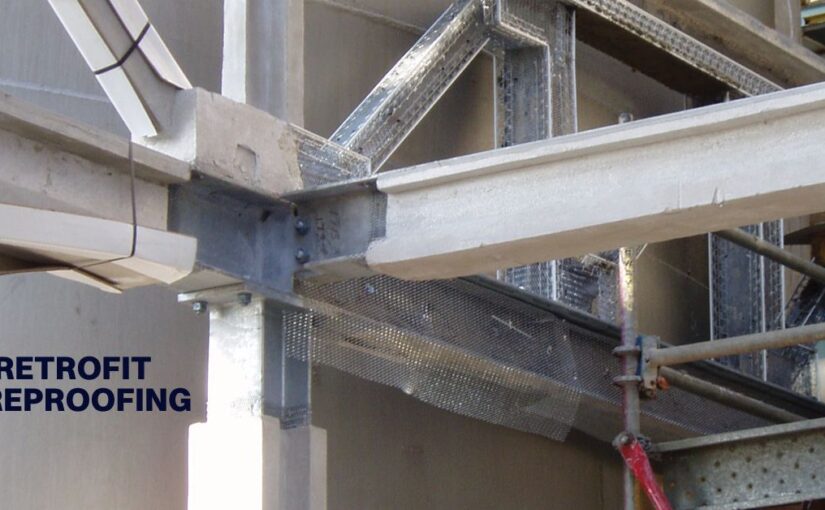It is important to enhance the resistance of steel structure to fire and high temperature to protect the lives and the property in the event of fire.
Here comes the role of Steel structure fire proofing. One of the most significant and commonly used is retrofit fireproofing of steel structure. It is the process that involves applying additional fire-resistant materials or methods to existing buildings to boost their ability to withstand fires.
The process includes installation of spray applied fire resistive materials, intumescent coatings or rigid board fireproofing. Retrofitting is important for improving safety compliance with updated fire codes.
What are the benefits of retrofit fireproofing?
- Enhanced fire resistance: Retrofit fireproofing boosts the structure’s resistance to high temperature and fire. By applying materials like intumscent paint or fire resistant sprays, the structural integrity of buildings, especially steel frameworks is maintained during the fire breakout. This resistance help prevent catastrophic failures, providing the occupants more time to evacuate safely and potentially saving lives.
- Adhere to safety regulations: The older buildings are constructed with the outdated fire safety regulations. The retrofit steel structure fireproofing helps bring these structures up to the current standards. It helps adhere not only to legal requirements but also plays a critical role in insurance policies and can be decisive in the underwriting process.
- Increased property value: Improving the fire safety features of the building through retrofit fireproofing can boost its market value. Properties with upgraded safety measures are more enticing to buyers and renters who focus on security and compliance. Also, these improvements make the property more appealing from financial viewpoint and reduce insurance premiums.
- Energy efficient: Some fireproofing materials like spray foam offer added benefits like improved thermal insulation and noise reduction. They not only provide protection against fire but also contribute to the lower power bills.
- Long-term duality: Retrofitting a building with fireproofing materials can extend its lifespan by protecting its structural components from fire damage. This durability is important for maintaining the structural integrity and usability of building over time, ensuring that it continues to service its purpose without requiring more repairs.
- Peace of mind: Retrofit of the building with fireproofing ensuring that it is protected and is better equipped to handle a fire. It provides peace of mind to property owners and businesses knowing that their property is safe guarded against the fire hazard.
Retrofit fireproofing is an investment that boosts the safety and property value ensuring compliance and reducing the operational costs. It is a proactive step towards a safer and more secured property.
FAQs
- What is retrofit fireproofing?
It is the process of applying additional fire-resistant materials to existing building to boost their ability to withstand fires. - What are materials of retrofit fireproofing?
Fire resistive materials, intumescent paints, and rigid board insulation are some of the materials of retrofit fireproofing. - How long the retrofit fireproofing last?
The retrofit fireproofing will last between 10 to 30 years based on materials used and environmental conditions.

